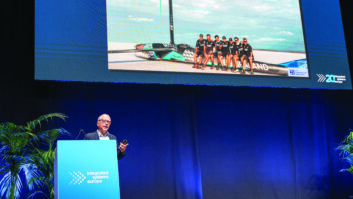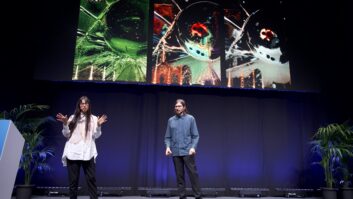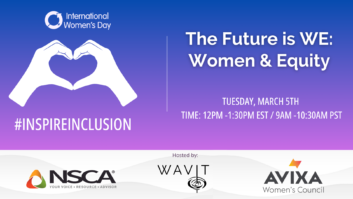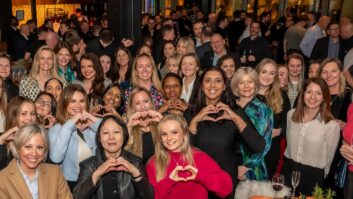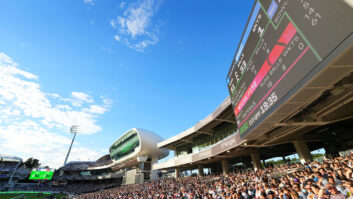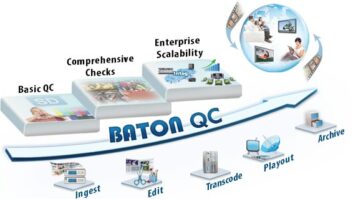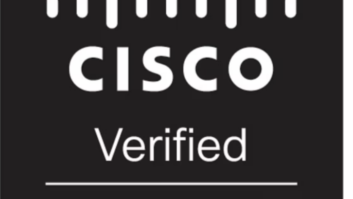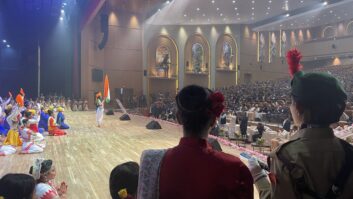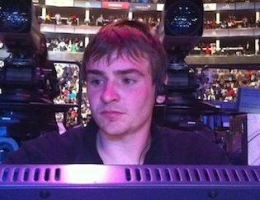
How did you get into the rental/staging business?
I was born and raised in the US, where in high school, at around the age of 14, I started helping out with school plays and musicals. By the time I graduated at 18 I was managing the school’s productions and freelancing for a local corporate production company. In those days, I mainly did sound; however, as time went on, I became more interested in lighting.
Later, at university in Miami, Florida, I was studying marine science and biology but spending all my spare time at the school’s theatre. I met my wife at that theatre; she was working towards a degree in lighting design. After graduating with a now dusty diploma in Marine Science and Biology, I started working full time in Miami as a lighting designer doing corporate and concert lighting. In 2006, we moved to the UK and I started working for London-based Entec Sound and Light.
What is your favourite project that you’ve ever been involved in?
Back in Miami, the company I was with was tasked with doing the Orange Bowl half time show in 2005. It’s a 20 minute music show with 10 minutes to wheel it out and turn on and then another 10 to strike it. I was tasked with getting DMX from the two sets of lighting desks to fixtures on stage (stored in two halves and joined up just before the show) and to more lights spread around the stadium. The installation took nearly a week and involved thousands of meters of Cat5 as we wired the entire stadium with ArtNet. Having never dealt with an ArtNet distribution of this scale, it was a learning experience. Despite many tense moments, it all came off OK.
Is there are a particular product that you’ve come to look on as ‘an old favourite’?
The James Thomas Pixeline 1044 is one LED product that, despite being an ‘old’ design and only using ultra-bright LEDs, is still specified today. Though they have been usurped by newer, brighter fixtures, they still have a place on many productions. Their staying power and rock-solid design makes them a personal favourite of mine.
Is there a recent product that’s caught your eye that you think will be very useful in your business?
I think the entire visual side of the live entertainment industry is in the middle of a major shift of focus. Watch a live video of a rock concert from the 70’s or 80’s and you will see hundreds of fixtures (think of the grids of par cans in the Queen shows of old). These days, it’s moving heads, LED and increasingly, video. I think this progression ultimately leads to a future where the lighting designer is effectively a ‘visual designer’ who controls video seamlessly integrated with a lighting rig. We are already seeing shows where video is played across the lights and this trend I think will continue. Muse’s latest (2010) stadium tour is a good example of this.
This integration requires new approaches to control – so the ArtNet merging capabilities in the GrandMA2 series for instance are good, as are products like Martin’s Ether2DMX8 that allows you to control lights from a media server and lighting desk on a channel-by-channel HTP/LTP basis. There are many other products that do this as well. Media servers are also getting better and more user-friendly. In particular, I have been very impressed with the Green Hippo products. Specifically, the Grasshopper is a relatively modestly priced system that allows HD playback on a server that a lighting person understands and can use easily.
The actual ‘output’ products are also shifting to suit this as well, I think. Newer generation LED video panels are designed to be built by lighting people. Examples here are Clay Paky’s Mirage screen, and Martin’s 2nd Generation LC panels. A very small fixture such as the Martin Mac 101 is exciting for its potential in video integration.
While I don’t think that LED is going to usurp halogen or discharge sources completely for some time – if ever – some of the newer solid state wash fixtures are truly amazing. Particularly, the Martin Stagebar2 and the Robe Robin 600 LEDWash are noteworthy; these each match or surpass their conventional counterparts in brightness alone – not to mention them being lighter, smaller and more ‘green’.
